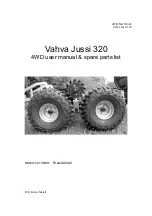
Ideal Gas Law Apparatus
TD-8596A
4
012-08420B
Experiment 1: Ideal Gas Law
Procedure
1.
With the pressure coupling disconnected, push the plunger
all the way in so that the stop is bottomed out. Record the
volume reading on the syringe. It should be around 20 cc.
2.
Set the plunger for a volume of 40 cc. Connect the
pressure coupling, and make sure the temperature jack is
also plugged in. Hold the base of the apparatus firmly
against a sturdy horizontal surface.
3.
Open the Capstone file “EX-5527 Ideal Gas Law.cap”
4.
Start recording data. Fully compress the plunger quickly so
that the stop is bottomed out. Hold this position until the
temperature and pressure have equalized and are no
longer changing. It should take less than 30 seconds for the
temperature to return to room temperature.
5.
Release the plunger and allow it to expand back out on its
own. (It may not go back to 40 cc.) Wait again until the
temperature and pressure have equalized and are no longer changing. Record the final volume reading on the syringe.
6.
Stop recording data.
Analysis
Constant Temperature
1.
Highlight an area (click and drag) on the pressure graph at the beginning of the run before you compressed the air. You
should see that data highlighted in the Data Table. Record the initial pressure (P
1
) in Table 1.
2.
Highlight an area on the pressure graph at the point just before you released the plunger. Note that the temperature
should be back down to almost room temperature again. Record the final pressure (P
2
) in Table 1. Record the volume
(V
2
) of the syringe when the plunger is fully compressed. It should be around 20 cc
3.
For constant temperature, the Ideal Gas Law reduces to P
1
V
1
= P
2
V
2
, or
4.
Take the ratio of the final pressure over the initial pressure P
2
/ P
1
. Take the ratio of the initial volume over the final
volume V
1
/ V
2
. Are they equal? Why not? There is actually a small consistent error in the volume that you can account
Table 1: Constant Temperature
Volume (cc)
Pressure (kPa)
1
40.0
2
Mechanical Stop
Plunger
Sensor
40 cc
V
1
V
2
------
P
2
P
1
------ (1)
=




























